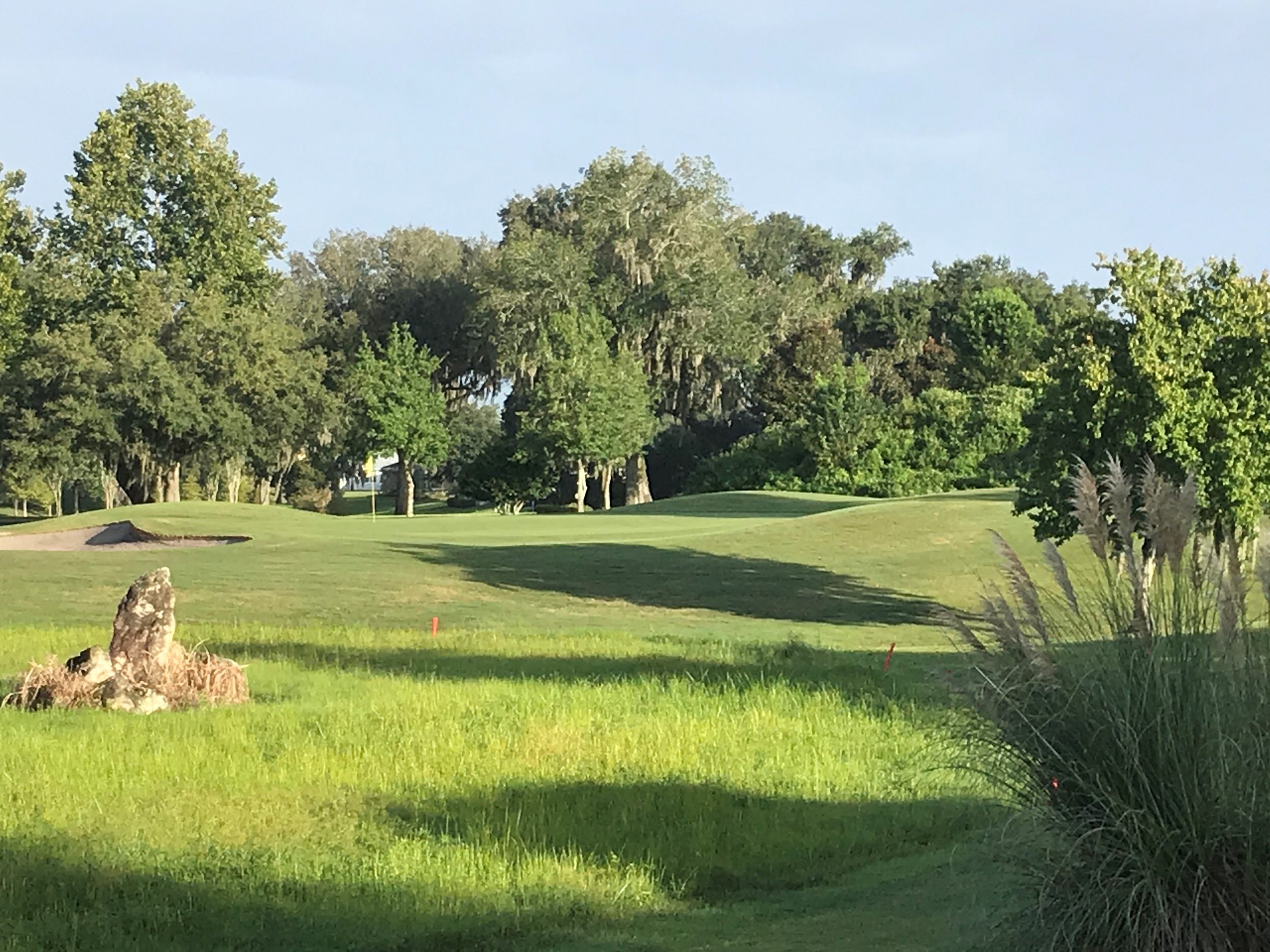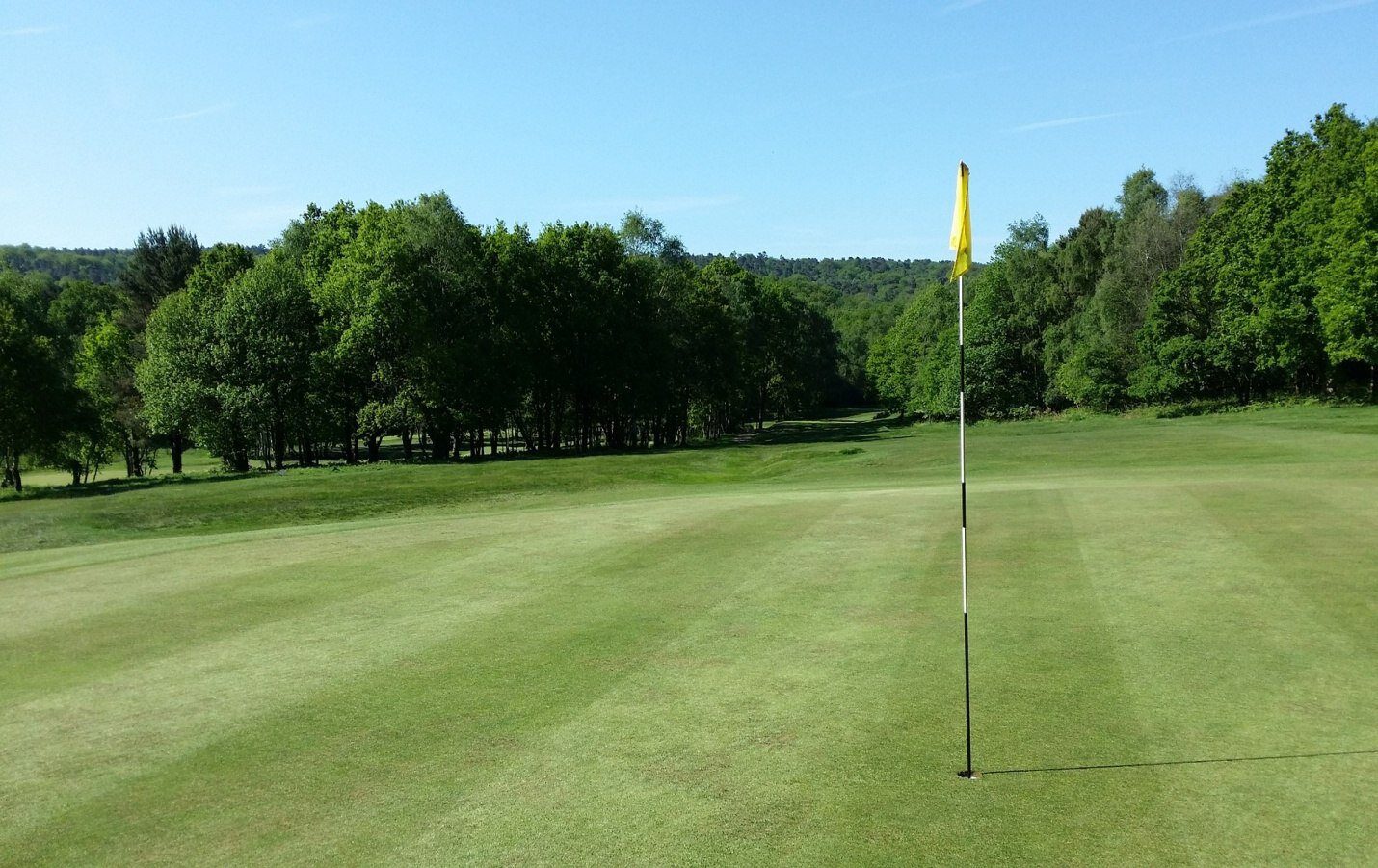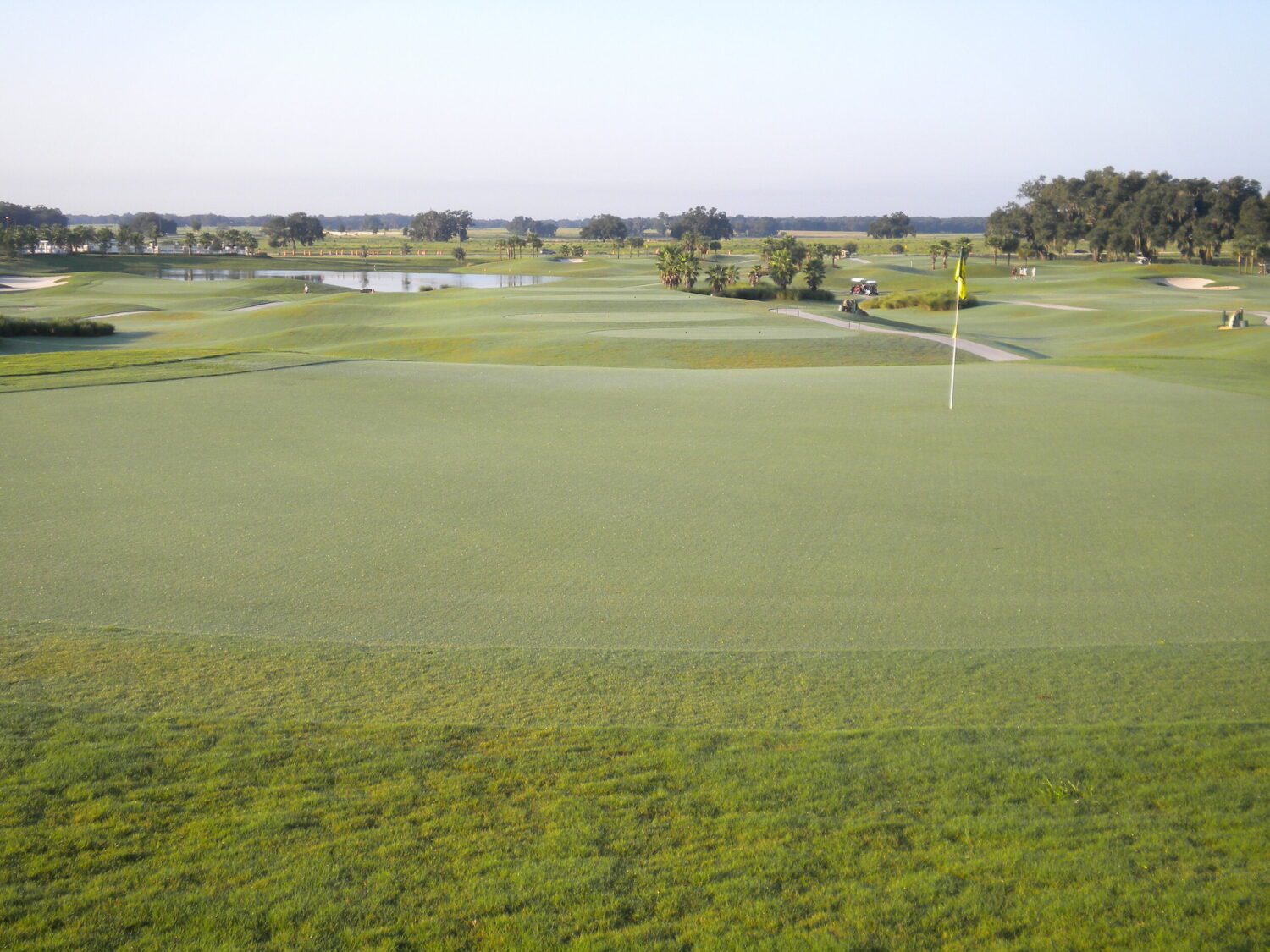In Florida’s golf courses, Integrated Pest Management (IPM) is a necessary and ongoing practice throughout the year. The region’s warm and humid climate provides favorable conditions for pest activity, including arthropods, nematodes, diseases, and weeds. Golf course superintendents must have a thorough understanding of IPM and its implementation for each pest group. This includes being able to identify pests, comprehend their life cycles and preferred conditions, and utilize various pest control techniques to ensure healthy turfgrass growth.
IPM, or Integrated Pest Management, is a comprehensive approach to pest control that involves multiple tactics. These tactics include selecting appropriate plants, implementing proper cultural practices, monitoring environmental conditions and pest populations, using biological controls, and using pesticides only when necessary and in a judicious manner.
The philosophy of IPM emerged in the 1950s in response to concerns about the negative effects of increasing pesticide use, such as environmental contamination and pesticide resistance. The primary objectives of IPM are to reduce pest management expenses, conserve energy, and minimize the risks associated with pesticide exposure to humans, animals, and the environment. Ultimately, IPM aims to reduce pesticide use by incorporating a combination of cultural, biological, genetic, and chemical controls to manage pest problems.
Written Plans and Record-Keeping
Creating a written IPM plan and maintaining records of scouting results are crucial for establishing historical data, tracking pest activity trends, and documenting both successful and unsuccessful outcomes. Adequate record-keeping is also necessary to comply with federal regulations, such as the Superfund Amendments and Reauthorization Act (SARA, Title III), which includes emergency planning and community right-to-know legislation. Additionally, if the golf course employs restricted-use pesticides (RUPs), specific record-keeping requirements must be followed.
Best Management Practices:
-
To effectively manage pests, it is important to document and identify key pest activities, as well as their specific locations and the plants they affect.
-
Understanding the life cycle of a pest is also essential, including identifying which life stage to target, whether it be eggs, larvae/nymphs, pupae, or adults in the case of an insect pest.
-
It is equally important to evaluate the effectiveness of corrective actions taken, including determining whether they successfully reduced or prevented pest populations while remaining economically viable and minimizing risks. Keeping records of such information is valuable when making future decisions.
-
Furthermore, regular observation and documentation of turf conditions, with the frequency determined by the specific pest in question (daily, weekly, or monthly), is necessary to make informed decisions regarding the severity of the infestation and the most effective control strategies to use.
Monitoring and Scouting
Effective monitoring, or scouting, is the cornerstone of a successful IPM program. It involves continuously monitoring for the presence and progression of pests throughout the year. By regularly observing turf conditions (with the frequency determined by the pest in question), and noting the specific pests present, informed decisions can be made regarding the severity of the infestation and the most appropriate control strategies to implement.
It’s important to note that pests may go unnoticed for a period of time before damage occurs or becomes noticeable. Therefore, it’s crucial to maintain records of scouting results to establish a historical record, track patterns of pest activity, and document both successful and unsuccessful control efforts. When conducting monitoring, be on the lookout for the following:
1- What are the signs of the pest?
Some signs to be aware of during monitoring may include the presence of mushrooms, damage caused by animals, insect excrement, or webbing.
2- What are the symptoms?
During monitoring, be on the lookout for symptoms such as chlorosis, stunted growth, dieback, leaf loss, tunnels, or mounds.
3- Where does the damage occur?
Areas of concern may be found along the fairway edges, in shaded areas, or in poorly drained locations.
4- When does the damage occur?
Make note of the time of the day and year, as well as the flowering stages of nearby plants.
5- What environmental conditions are present at the time of damage?
Factors to consider during monitoring include air temperature and humidity, soil moisture levels, soil fertility, air circulation, and the amount of sunlight.
Best Management Practices:
Personnel should be trained to regularly observe and document the condition of turf, noting the presence of pests and determining how damaging they are. This should be done daily, weekly, or monthly, depending on the pest, in order to make intelligent decisions about necessary control strategies.
They should also be trained to recognize different pests, understand their life cycles, and learn which life stage to target. For example, for an insect pest, personnel should be able to identify whether it is an egg, pupa, larva/nymph, or adult.
Personnel should be able to determine whether corrective actions have prevented or reduced pest populations, while also considering the economic and risk factors involved. This information should be recorded and used for future decision-making. It is also important for personnel to document and identify key pest activities on specific plants.
They should find signs of the pest, such as mushrooms, insect frass, animal damage, or webbing, as well as identify symptoms of the pest, such as chlorosis, growth reduction, dieback, defoliation, tunnels, or mounds.
They should determine the extent of the damage, focusing on areas such as the edges of fairways, poorly drained areas, or shady areas. The time of day, year, and flowering stages of nearby plants should also be noted.
Finally, pest outbreaks should be mapped to identify patterns and susceptible areas for future target applications and ultimate pesticide reductions.
Pests
There are 4 types of pests that harm the turfgrasses in Florida, let’s discuss each one of them in detail with their best management practices.
1- Diseases
Turfgrasses in Florida are managed intensively to create suitable surfaces for golf courses. However, various plant pathogens can damage the turf if conditions are favorable for disease. Golfers have little tolerance for disease damage and expect high-quality courses for the amount they pay. Although no measure can fully eliminate the danger of turfgrass disease, turfgrass managers have several tools and tactics available to decrease the likelihood of disease. The options available are dictated by a superintendent’s budget, turfgrass species and cultivars, and membership expectations.
The following are the most problematic diseases that affect golf turf:
-
Bermudagrass decline and take-all root rot caused by Gaeumannomyces graminis var. graminis
-
Pythium root rot and blight of warm-season turfgrasses
-
Helminthosporium leaf spot and melting out caused by Bipolaris spp.
-
Leaf and sheath spot caused by Waitea circinate var. zeae
-
Large patch disease caused by Rhizoctonia solani
-
Dollar spot caused by Clarireedia monteithiana (formerly Sclerotinia homoeocarpa)
-
Fairy ring caused by various basidiomycete fungi.
Best management practices for turfgrass diseases involve the following steps:
-
Properly diagnose the disease-causing symptoms, which may involve sending samples to diagnostic clinics.
-
Use proper cultural practices to reduce turfgrass stress.
-
Correct conditions that produce stressful environments for the turf, such as improving airflow and drainage or reducing shade.
-
Integrate fungicide use into an overall management strategy for a golf course.
-
Select appropriate and effective fungicides to prevent the spread of specific diseases.
-
Preventively apply appropriate fungicides where diseases are probable to occur and when conditions favor disease outbreaks.
-
Record and map disease outbreaks and identify trends to guide future treatments and focus on changing conditions in susceptible areas to reduce disease outbreaks.
2- Arthropods
Arthropods, including insects and mites, can be found in turfgrasses on golf courses. While most are beneficial, some can reduce plant health or be nuisance pests. The pests can cause different types of damage to the plant depending on where they attack. Major pests include root-feeding pests like mole crickets and white grubs, leaf or stem-feeding pests like aphids and caterpillars, and those with piercing-sucking mouthparts, like scale insects and mites, which cause chlorosis, browning, and dieback. Finally, nuisance pests like earthworms and cicada killer wasps may not directly damage turfgrass but can affect human or animal health.
Several best management practices for managing arthropod pests in turfgrass and ornamental plantings on golf courses include using proper cultural practices to reduce turfgrass stress and increase resistance to pests, planting pest-resistant or pest-tolerant species and varieties, creating areas of diverse flowering plants to promote natural pest control, correctly identifying the pests, regularly surveying turf and plantings for signs of pests, avoiding widespread use of broad-spectrum, contact-toxic insecticides, using insecticides and miticides specific to the pests, and recording and mapping arthropod pest outbreaks to guide future treatments.
3- Nematodes
Plant parasitic nematodes are microscopic roundworms that feed on living plant tissue, weakening the root system and making the turf more susceptible to environmental stresses and pest infestation. Effective nematicides used in the past 25 years have been withdrawn from the market, making nematode management on turfgrasses increasingly difficult.
Plant parasitic nematodes are tiny, unsegmented roundworms that typically range in length from 1/64th to 1/8th inch (0.25 and 3 mm). These parasites feed on live plant tissue by using a hollow stylet, or mouth spear, to puncture cell walls and then inject digestive fluids into the cells, from which they draw out the liquid contents.
As a result, nematodes weaken the root system, impeding the turf’s ability to effectively absorb water and nutrients from the soil, making it more vulnerable to environmental stressors. In addition, compromised turf is more susceptible to pest infestations, particularly troublesome weeds that necessitate herbicide treatments.
To effectively manage nematodes, it is recommended to conduct an assay of soil and turfgrass roots if nematode activity is suspected. It is important to base the application of a nematicide on assay results. To prevent further stress caused by insects, diseases, nematodes, or weeds, it is recommended to divert traffic away from affected areas.
4- Weeds
A plant is considered a weed when it grows where it is unwanted or out of place. For instance, bahiagrass is regarded as a weed when it grows in a pure stand of bermudagrass but is highly desirable when cultivated in a monoculture, such as a golf course rough. Weeds not only detract from the aesthetics of an area but also compete with turfgrasses for vital resources such as light, soil nutrients, soil moisture, and physical space. Furthermore, weeds can act as hosts for other pests such as plant pathogens, nematodes, and insects. Certain weeds can also cause allergic reactions in humans.
Effective management and control of weeds require proper identification. To minimize weed encroachment and bare soils, it is important to choose turf species or cultivars that are suitable for the prevailing environmental conditions. Cultural practices that protect turfgrass from environmental stressors like shade, drought, and extreme temperatures should be adopted or maintained to prevent weed encroachment.
Inappropriate turf management practices like incorrect use of chemicals and fertilizers, improper mowing height or frequency, insufficient soil aeration, and compaction or physical damage caused by excessive traffic can lead to weed infestation. To reduce this risk, these practices should be addressed. Proper fertilization is also essential to sustain growth density, desirable color, and vigor of turfgrasses, which in turn helps resist diseases, insects, and weeds.
Partner With DTE Golf Today
DTE Golf® is a trusted name across multiple regions of the United States, renowned for providing unparalleled quality and service. Our clients have consistently achieved exceptional results by partnering with us to maintain, manage, and optimize their golf courses.




